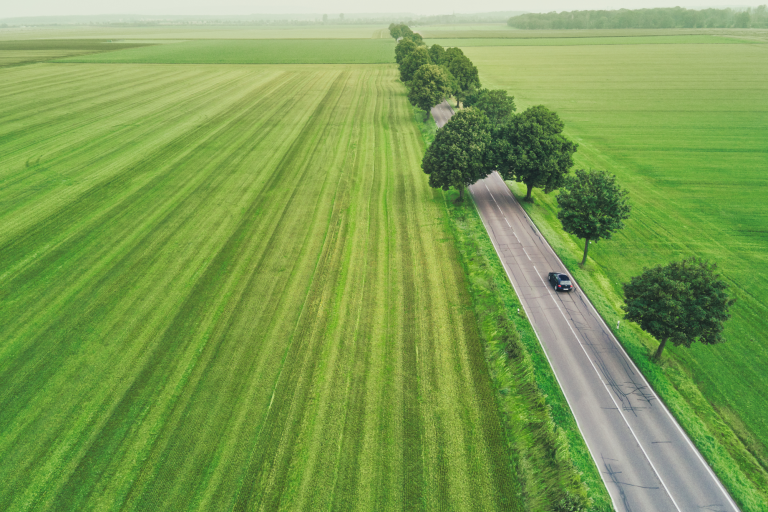Plastic packaging has a key role to play in the global food system, protecting perishable items and extending the shelf life of fresh produce. However, this is exacerbating the problem of plastic pollution, with progress to reduce plastic waste driven mainly by recycling, rather than the elimination of single-use plastic. Estimates published by climate action NGO WRAP show the gravity of the current situation: worldwide around 141 million tonnes of plastic packaging is produced annually, of which around a third is not captured by collection systems, ending up as plastic waste in our environment. The production, use and disposal of plastic accounts for about 1.8 billion tonnes of carbon emissions each year.
Our expectations of companies
Following the publication of our Investor Expectations for Global Plastics Challenges in 2020, we have seen increased awareness of plastic pollution risks at the companies in our engagement programme, including food retailers and producers. Our engagement activity has highlighted the importance of looking at plastics pollution in the context of companies’ wider strategies and business models, and assessing the unintended negative consequences of alternatives. While we welcome the increasing awareness that single-use plastic packaging is a problem, in our engagement dialogue with companies we also emphasise that the life cycle of alternatives must be assessed as part of a comprehensive packaging and product design strategy.
We want companies to demonstrate that they have considered the impact of their packaging strategies on their carbon emissions and the unintended consequences of switching materials or changing packaging designs. For example, glass is approximately twice as heavy as most types of plastic, resulting in a higher carbon footprint from transportation. Switching to paper packaging and cartons may give rise to a deforestation risk.
Waste not, want not
Considering the unintended consequences of switching from plastic is critical when addressing the issue of food waste. It is estimated that a third of all the food produced globally is wasted. According to the UNEP Food Waste Index 2021, about 931 million tonnes of food waste was generated globally in 2019 – 61% from households, 26% from food services and 13% from retail. The Intergovernmental Panel on Climate Change’s special report estimates that food loss and waste accounted for 8-10% of the greenhouse gas emissions responsible for global warming between 2010 and 2016.
Packaging plays a key role in reducing food waste and its associated greenhouse gas emissions, particularly for items where the environmental impact of the food is high relative to the packaging. However, a recent study published by WRAP showed that fruit and vegetables wrapped in single-use plastic packaging did not prevent food waste, as it forced individuals to buy food in larger packages, which they did not always consume. In WRAP’s view, the key factors that determined the amount of food waste after purchase were enabling people to buy the right amount of food, and how the produce was stored.
Consequently, companies need to consider the trade-offs between different types of packaging, or going without packaging for certain food items. If the shelf life is shortened due to a reduction in packaging, this needs to be addressed by making changes to the food supply chain. This might mean focusing more on local food production, or providing a different consumer experience, which enables them to purchase only the food that they need.
Our engagement approach
We have engaged with retailers and grocers on setting plastic reduction targets since late 2018, followed by more detailed discussions on packaging strategy. For example, we urged Walmart, Coca-Cola and General Mills to disclose their plastics footprint and set a reduction target for plastics. We have seen progress at Coca-Cola, with the company adding a virgin plastic reduction goal to its suite of ‘world without waste’ goals.
We also engaged with Nestlé on setting a plastics reduction target. It committed to reaching 100% recyclable or reusable packaging, and reducing the use of virgin plastics by a third by 2025. We still see scope for development, specifically in the setting of a quantified target on the use of recycled content in its materials. We will continue to engage on this and consider whether a follow-up objective should be set.
We welcomed the supermarket chain Koninklijke Ahold Delhaize’s disclosure against its plastic target and will monitor its progress towards its 2025 target for zero plastic waste from its own-brand packaging, encouraging it to scale this to other suppliers.
Through engagement, we have learned that some companies need to focus on developing a comprehensive strategy for packaging, such as that demonstrated by UK retailer Tesco. Although it has not yet set a quantified, time-bound plastics reduction target, which we encourage, the company is auditing every product it sells against a hierarchy of remove, reduce, reuse and recycle, across all packaging materials, pushing its suppliers to maximise the opportunities at each stage. Also, it is explicitly making packaging a determinant in its range reviews, which will be conducted at a category level to encourage competition and best practice across suppliers, including branded suppliers.
Mondelez International had a series of 2025 packaging goals dating from 2018. In 2022 we started to engage with the company on setting recycled content targets for different packaging materials including plastic, glass, metal and paper, or evidence that it is quantifying its packaging value chain ambitions in key markets. We have also engaged with Huhtamaki, a beverage and food manufacturer, to expand its commitment for all product developments to be 100% recyclable, reusable or compostable by 2030. In 2022, the company began to disclose the percentage of its products considered recyclable.
We began engaging with companies on reducing food waste, such as food and beverage outlet operator SSP, on repurposing post-production surplus stock. We will continue to engage with companies to find adequate solutions for packaging that strike a balance between reducing food waste and ensuring that no packaging pollutes the environment.








